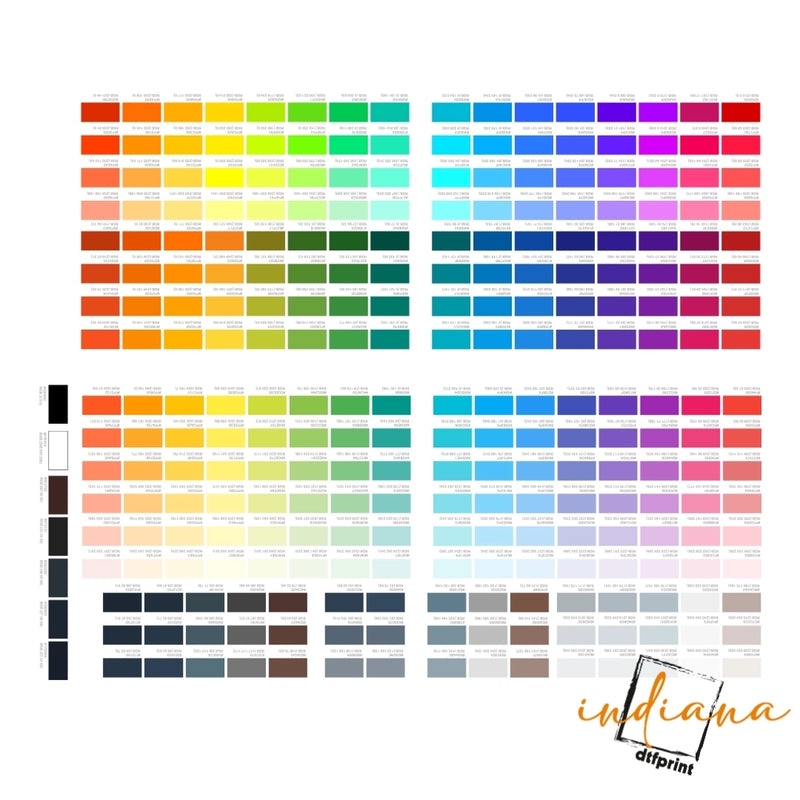DTF printing makes design transfers easy and vibrant, but small mistakes can ruin your work. Whether you're just starting or printing every day, avoiding common DTF printing mistakes can save time, money, and plenty of frustration.
In this blog, we’ll break down the common DTF printing issues that crop up from setup to final press, and share real-world tips on how to avoid them. If you're wondering how to get clean results with DTF transfers, this guide is for you.
1. Skipping DTF Printer Maintenance
Let’s start with the basics. A poorly maintained printer is the root of many DTF transfer errors. Dirty print heads, clogged nozzles, and inconsistent ink flow can create streaks, dull colors, or even gaps in the design.
DTF printer maintenance tips:
- Perform nozzle checks daily
- Keep your printer covered when not in use
- Use only high-quality inks compatible with your machine
Taking just 5 minutes a day can prevent a whole list of common DTF printing issues that slow down production.
2. Poor Film and Powder Handling
Not all films and powders are created equal, but how you handle them matters just as much. One of the most overlooked DTF printing do’s and don’ts is film storage. Improper storage causes warping or moisture absorption.
Always:
- Store DTF film flat and sealed with desiccants
- Keep your workspace between 60°F and 75°F
- Avoid humidity above 60%
This helps avoid DTF transfer warping and keeps your powder adhering smoothly during the curing phase. One of the worst DTF powder curing issues? Uneven distribution due to static or damp film.
3. Inaccurate Heat Press Settings
Heat press mistakes to avoid can be the difference between a transfer that lasts and one that peels in the wash. Using the wrong temperature, pressure, or pressing time leads to DTF print not sticking, cracking, or ghosting.
Here’s what works:
- Press at 300°F to 320°F
- Time: 10–15 seconds
- Use medium pressure, not too light or too heavy
If you're wondering what causes DTF prints to peel off, it's usually temperature that's too low or inconsistent. Make sure your press is calibrated often.
4. Ignoring Humidity and Environmental Factors
Your shop environment matters more than you think. High humidity levels can ruin an otherwise perfect transfer. Moisture causes film to bubble, powder to clump, and even makes your transfer peel off after pressing.
Best practices for DTF transfer printing:
- Use a hygrometer to monitor humidity
- Keep levels between 40–60%
- Run a humidifier or dehumidifier if needed
Keeping the environment stable will drastically reduce DTF transfer errors and make every press cleaner and more consistent.
5. Misjudging the Curing Stage
Curing is where the magic happens, but it’s also where many things can go wrong. Rushing this part of the process leads to DTF powder curing issues like undercured or burnt adhesive, which causes the transfer to either flake off or stick too much.
Tips to get it right:
- Cure at 250°F–280°F for 2–3 minutes
- Watch for a matte, not glossy, finish
- Don’t overheat, it makes the film brittle
This step is crucial if you're trying to figure out how to fix peeling DTF transfers. A properly cured design won’t flake or lift once pressed.
6. Not Following Transfer Positioning Techniques
Even if your design looks perfect, poor placement or misalignment can ruin the whole job. Whether you’re off-center or slightly crooked, the result looks amateurish and wastes a shirt.
To avoid this:
- Use T-shirt rulers or alignment guides
- Double-check placement before pressing
- Apply light heat to “tack” the design before the final press
If you're committed to how to prevent DTF transfer mistakes, this little step can seriously boost professionalism.
7. Inadequate Post-Press Cooling
After pressing, let your transfer cool down completely before peeling the film. Premature peeling causes DTF print not sticking, ghosting, or even full design lift.
Pro tip:
- Wait at least 30 seconds
- For cold peel films, be patient
- Use a Teflon sheet to re-press if needed
This ensures your design bonds properly and you’re not left figuring out how to fix peeling DTF transfers after the fact.
Wrapping it Up
Avoiding DTF printing mistakes is all about consistency, not perfection. With the right setup, smart habits, and prep work, you’ll dodge DTF transfer errors and achieve clean, professional results every single time.
At Indiana DTF, we’re committed to helping you succeed. We offer top-grade DTF films, powders, and inks designed to reduce common DTF printing issues and keep your business running smoothly. Need more help troubleshooting or choosing the right materials? Our team’s just a click away.
Frequently Asked Questions
1. What causes DTF prints to peel off?
Peeling often occurs if the heat press temperature is too low or the film isn’t fully cured. Always double-check your press settings and make sure heat is evenly applied for best results.
2. How to prevent DTF transfer mistakes?
Keep your workspace at the right temperature and humidity, store your DTF film flat and sealed, and regularly calibrate your heat press. These habits help prevent common DTF printing issues every time.
3. What are the best practices for DTF transfer printing?
Always start with clean, dry films, apply DTF powder evenly, press at the right temperature, and let the design cool before peeling. Every small step makes a big difference in quality.
4. How to fix peeling DTF transfers?
Re-press with a Teflon sheet for a few extra seconds and add more pressure. Always ensure the film is fully cured and cooled down before peeling to avoid transfer issues.
5. What are common heat press mistakes to avoid?
Using the wrong temperature or skipping press calibration causes major issues. Always let transfers cool before peeling. A heat gun or thermometer helps you keep temps consistent for clean results.











